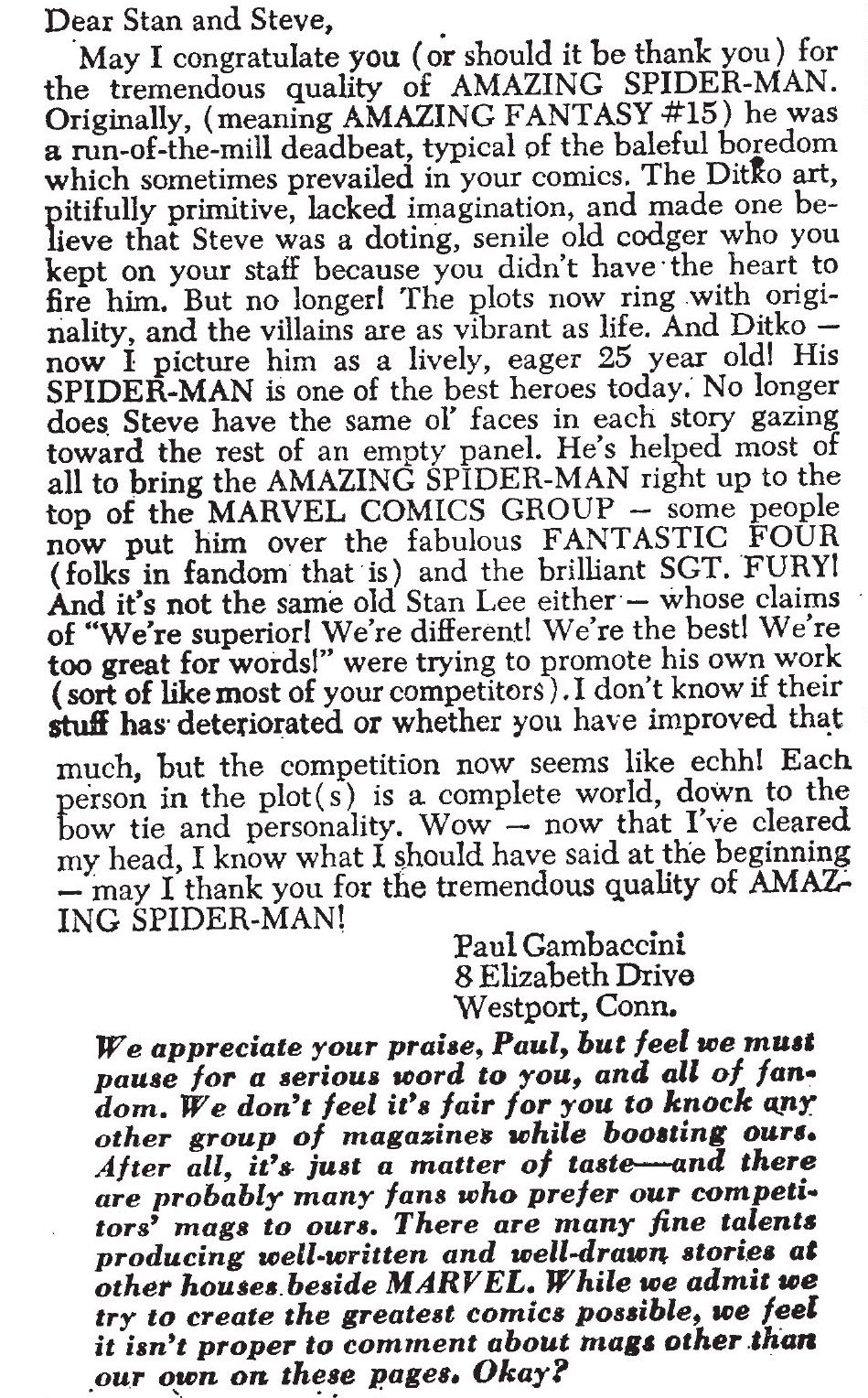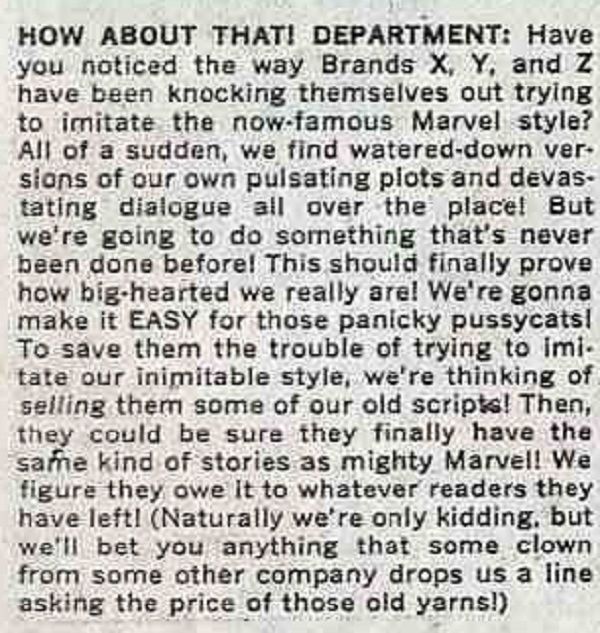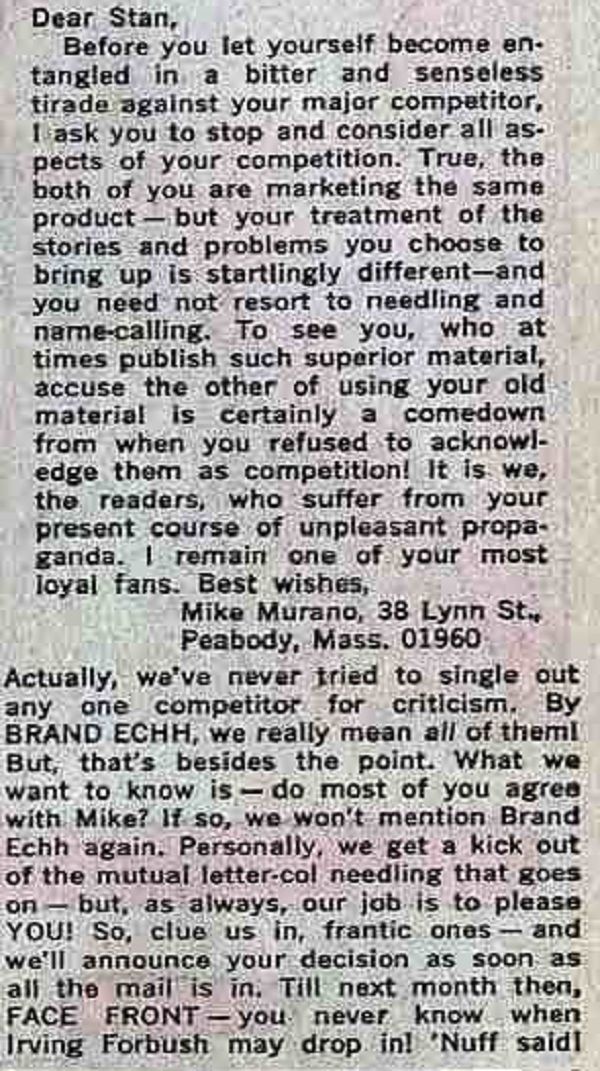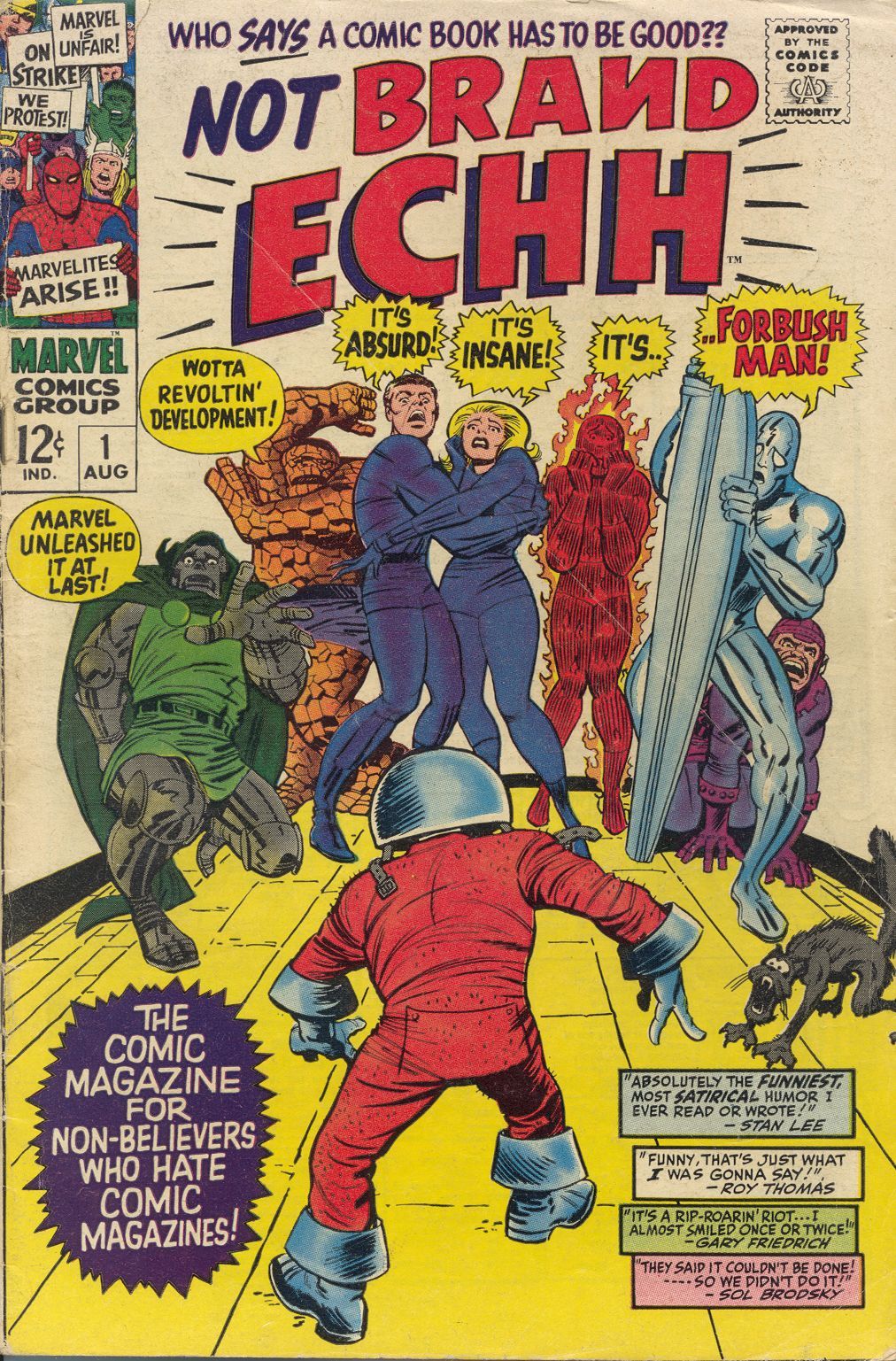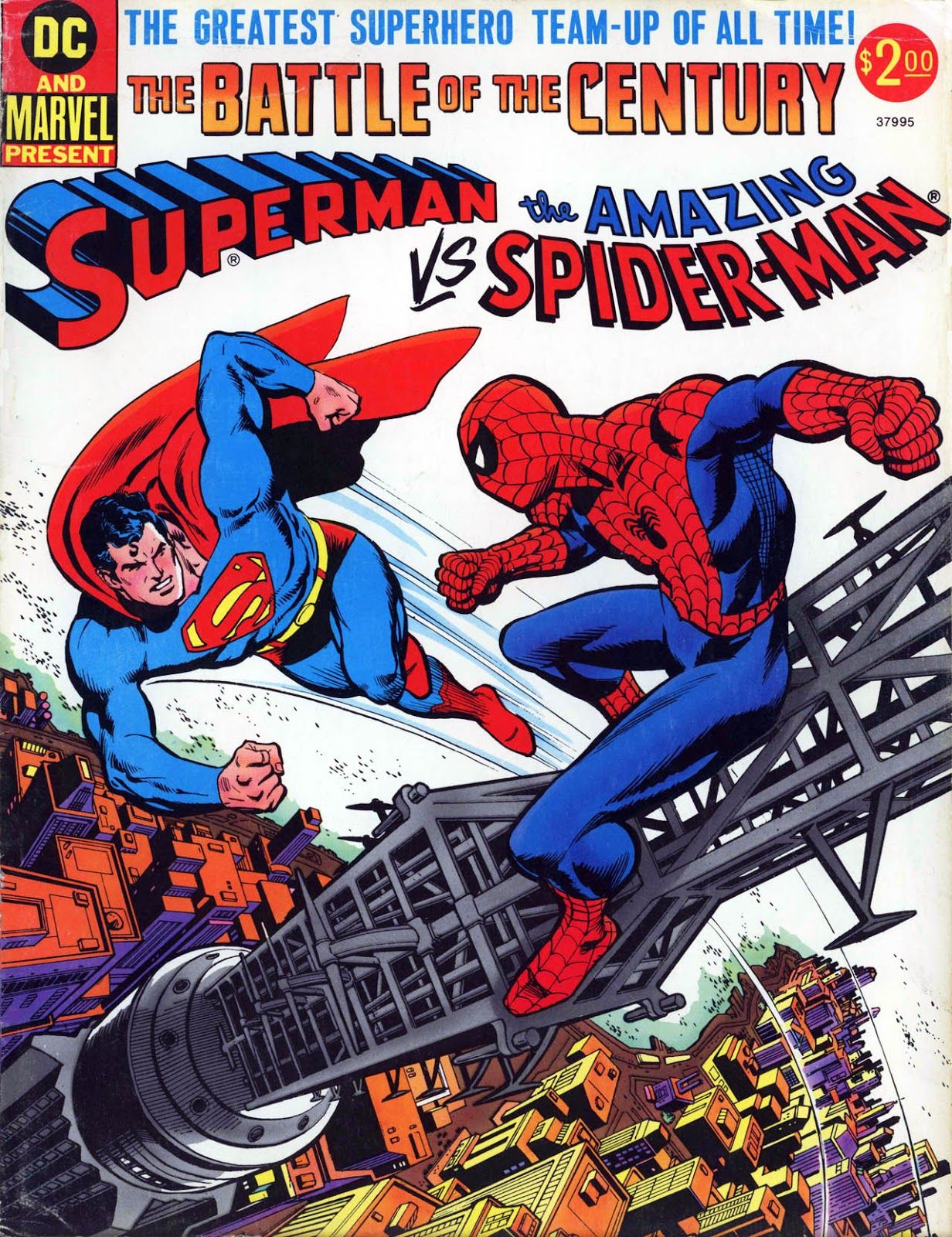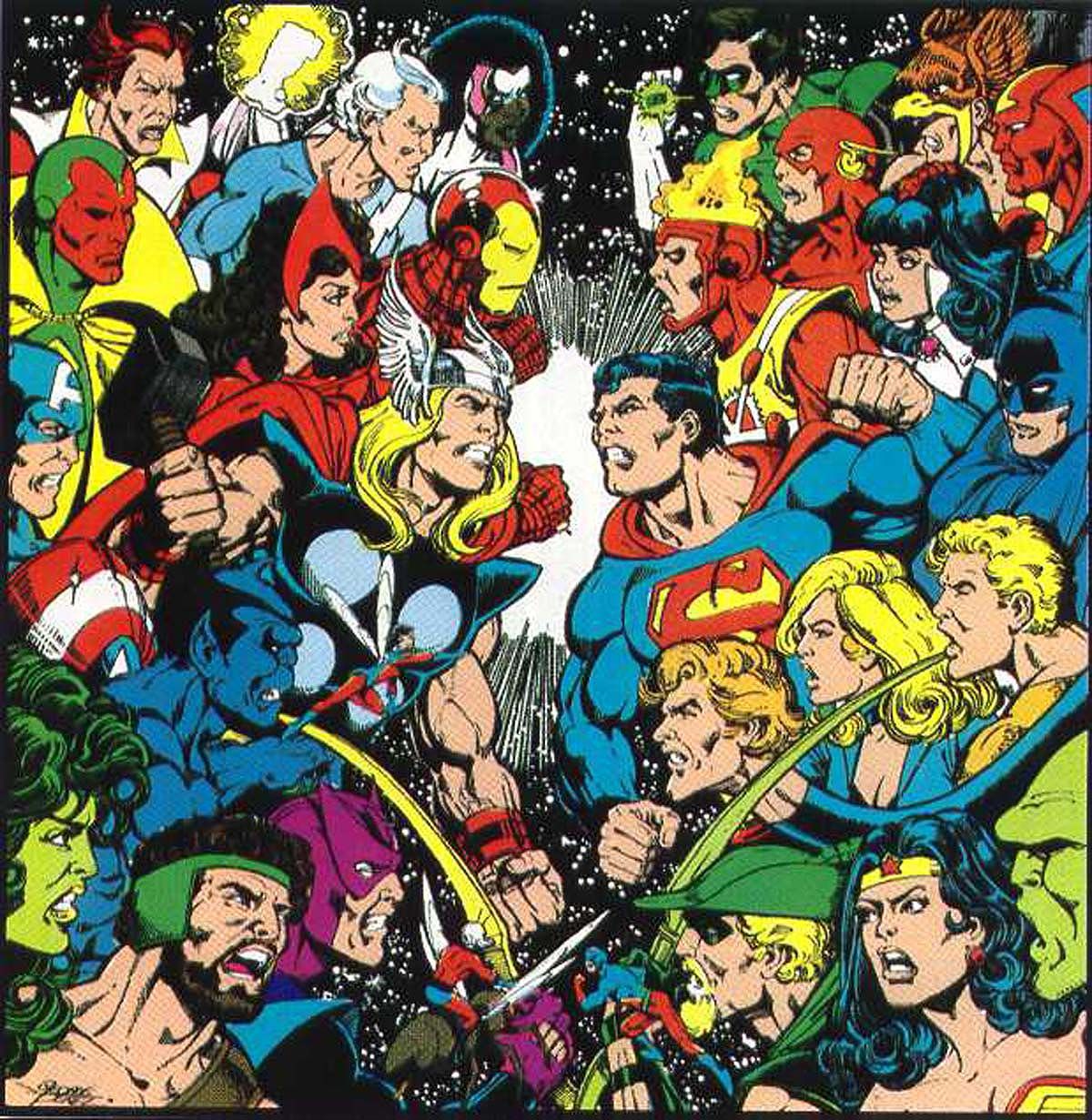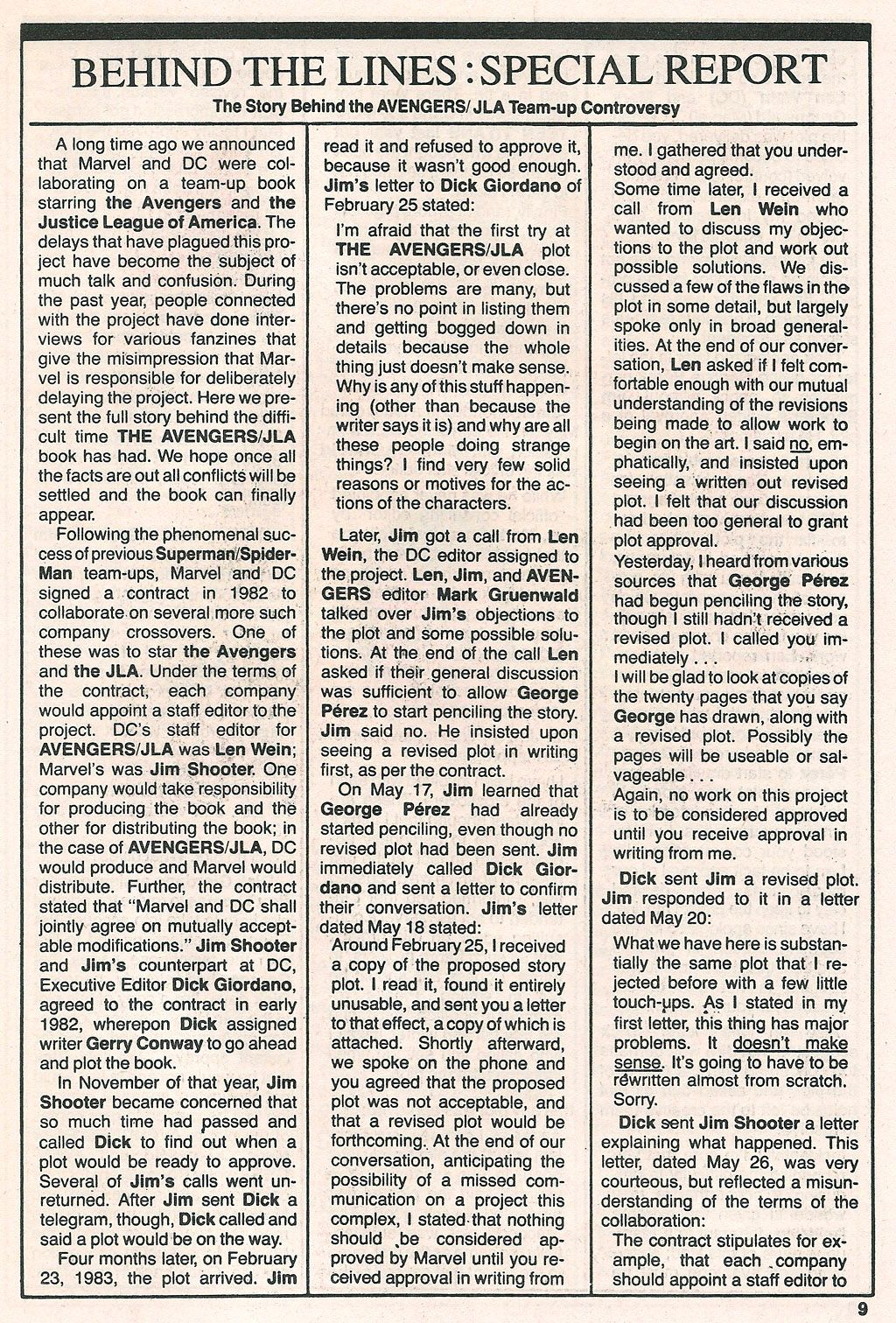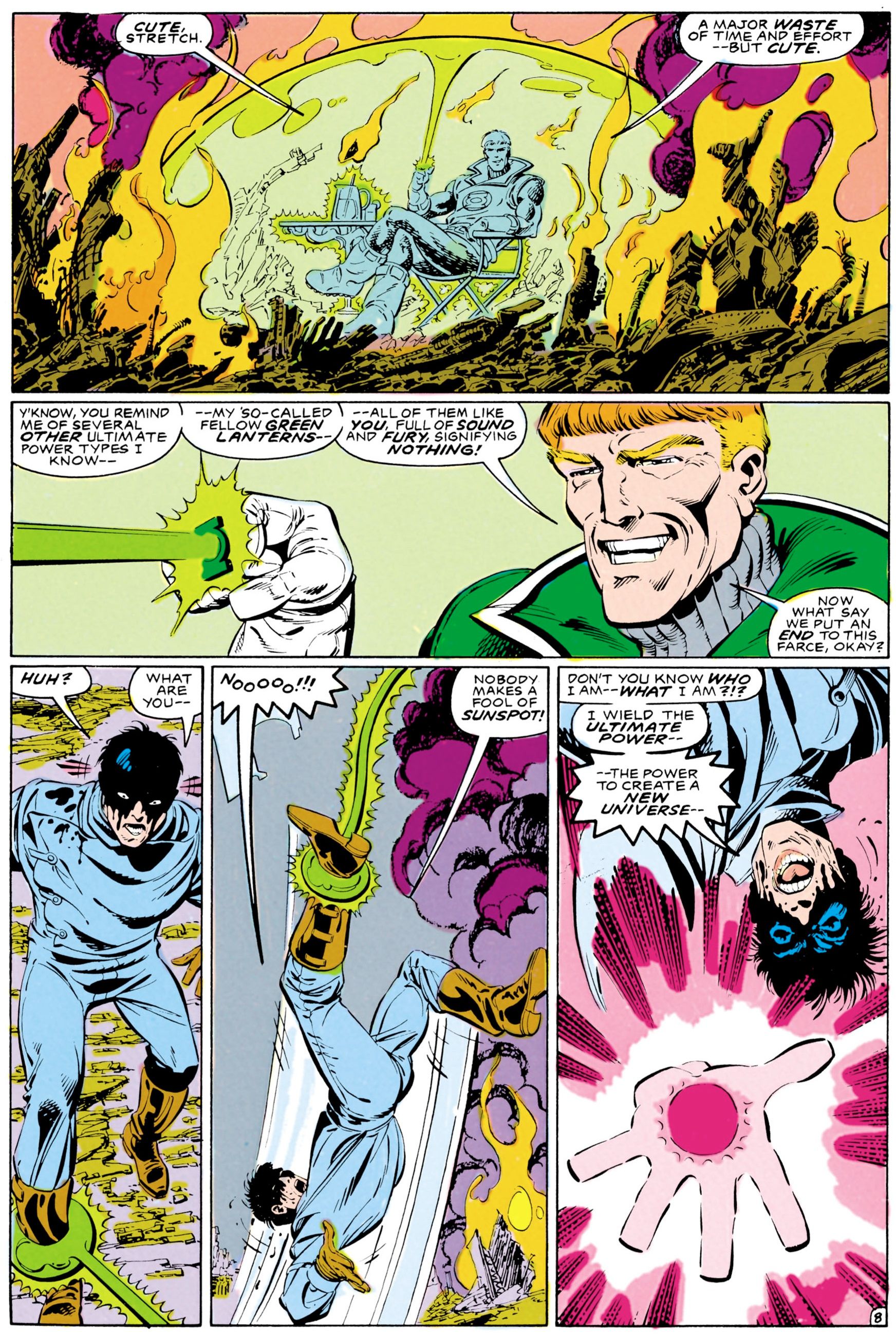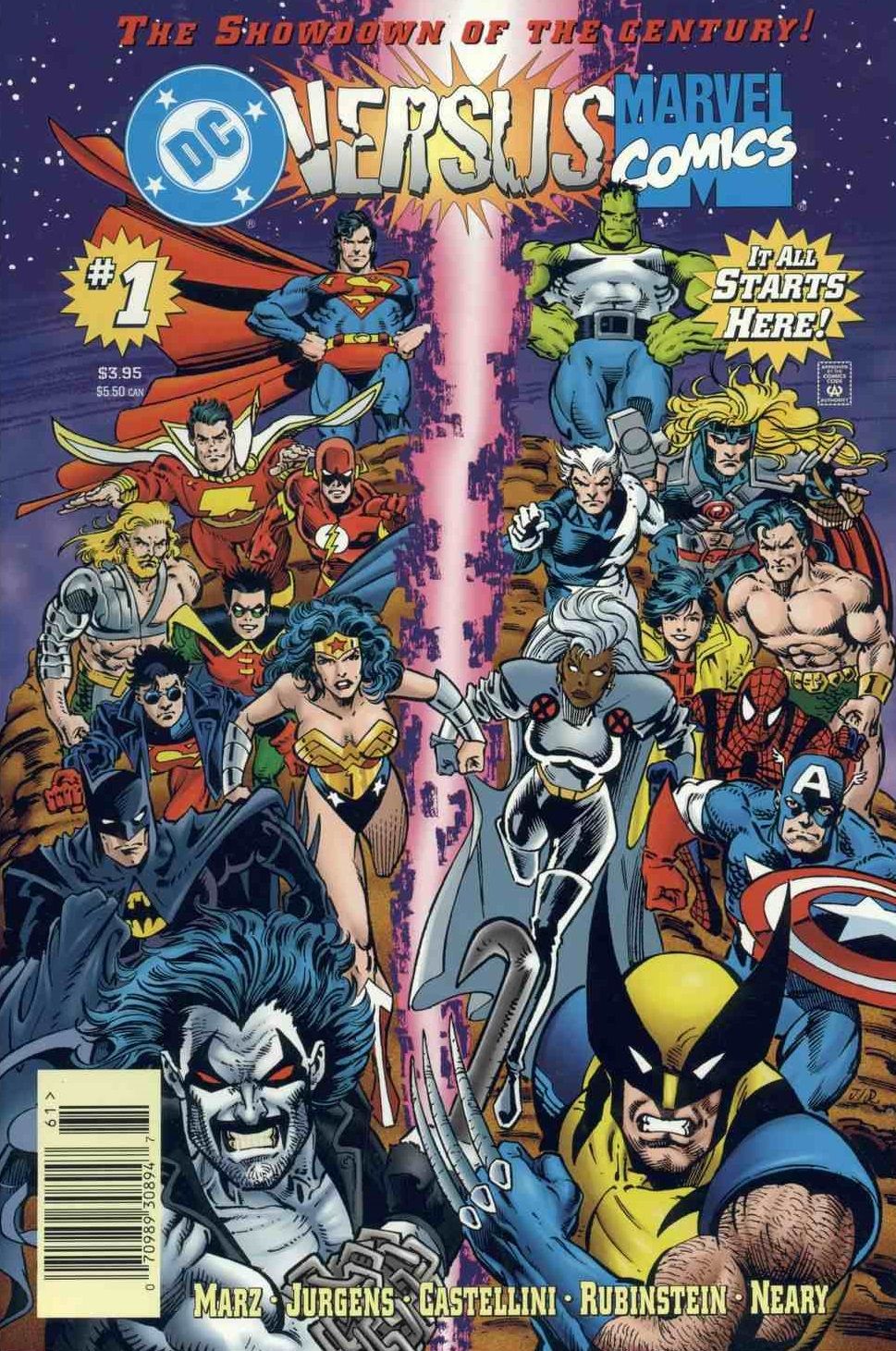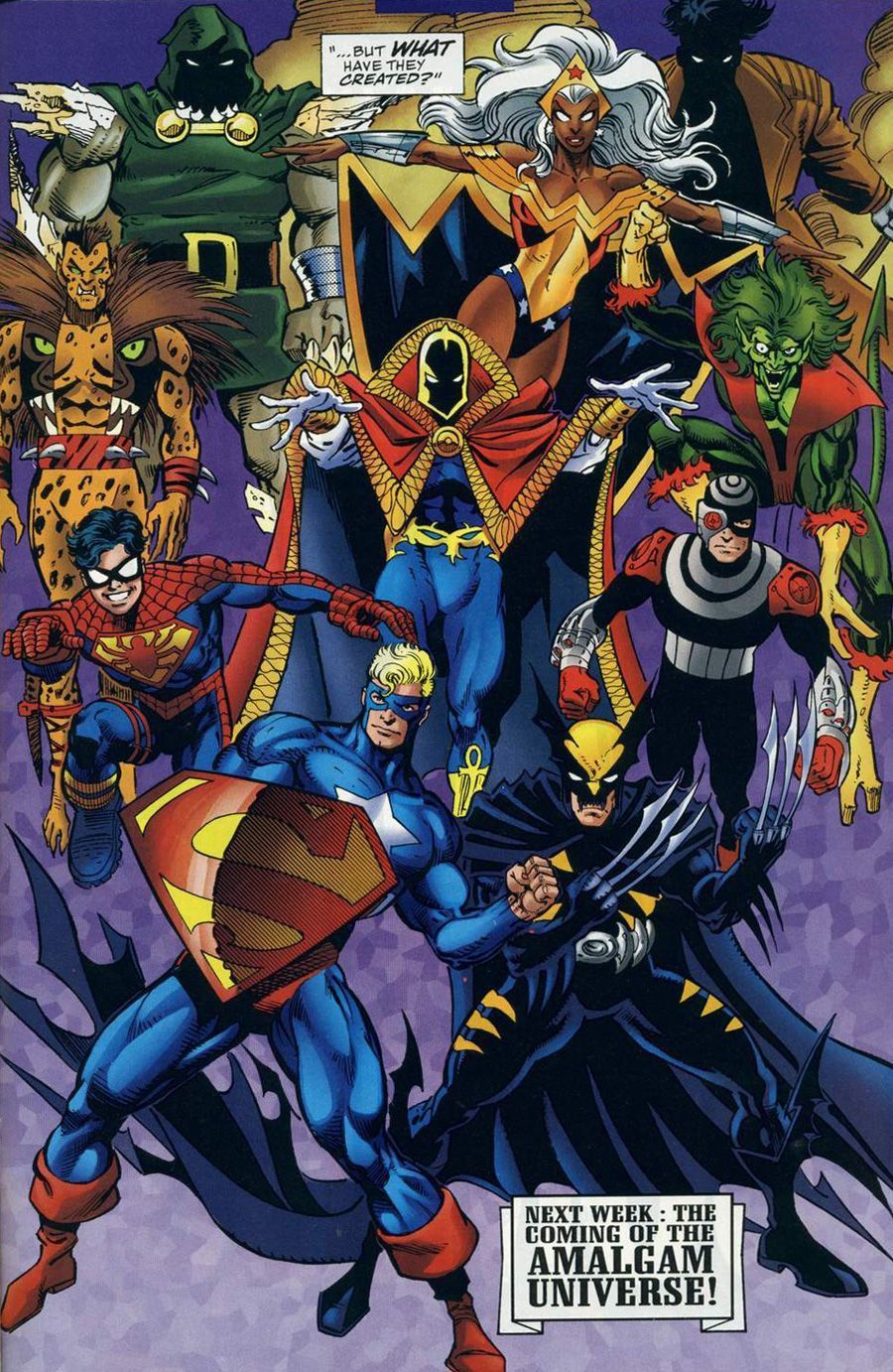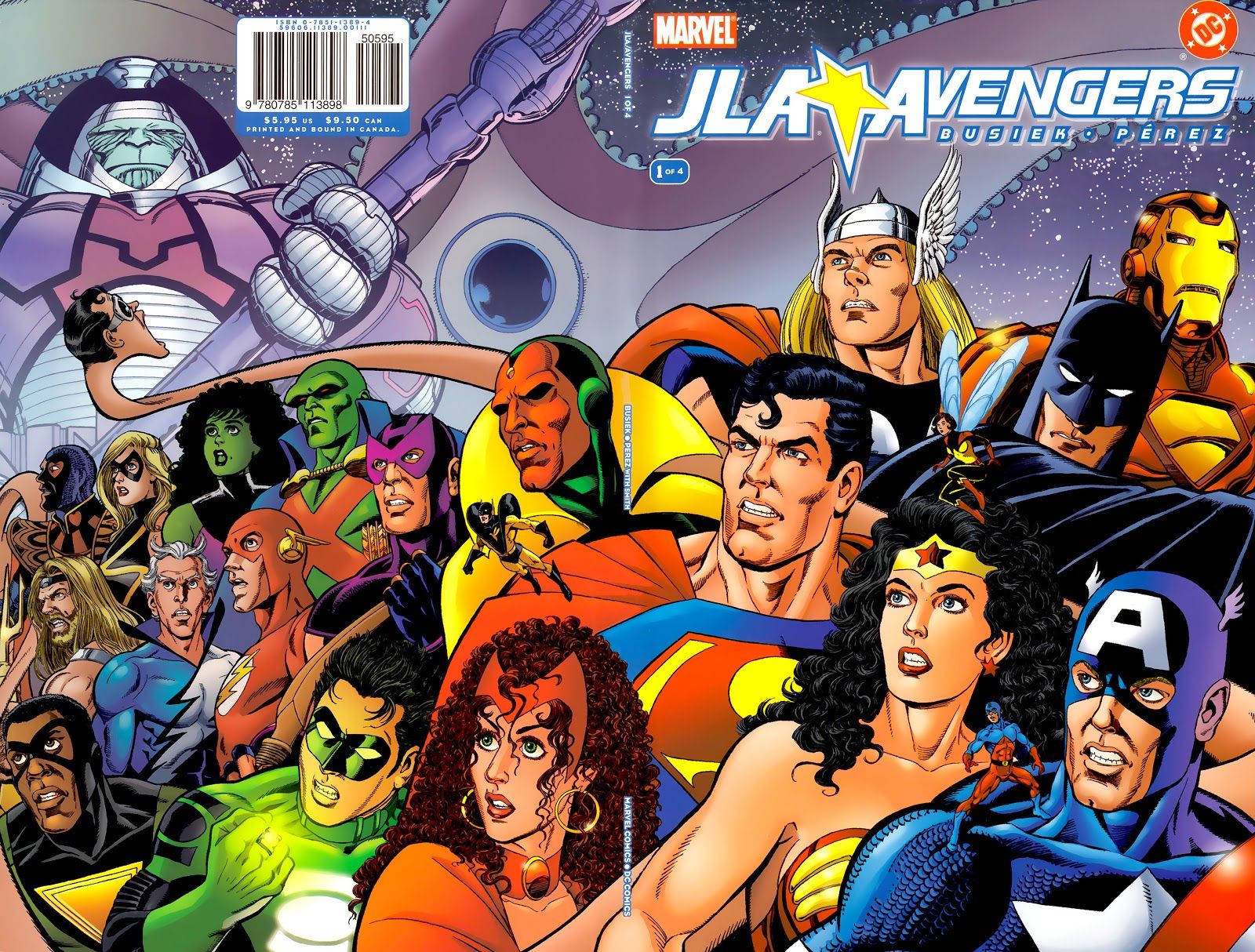With the upcoming release of Shazam!, a character that for many years was named Captain Marvel, just like Marvel's current hit superhero film, there has been a lot of talk in fandom about the perceived rivalry between DC and Marvel. It has also been in the forefront of fandom following the news of Disney re-hiring James Gunn to direct Guardians of the Galaxy Vol. 3 after Gunn was fired last year and then went on to be hired by Warner Bros. to direct DC's second Suicide Squad film. When a major director like James Gunn directs both a DC movie and a Marvel movie, it brings up all those simmering notions about DC and Marvel's rivalry. Of course, that leads to the question of whether DC and Marvel have an actual rivalry at all. Clearly, at the simplest definition of the term, companies that are in "competition for the same objective or for superiority in the same field," then yes, DC and Marvel clearly are rivals. Both companies compete for comic book sales and for success in movies (especially since now most of Marvel's film rights are owned by the same company that owns Marvel). However, when fans think about rivalries, they mean more than simply business competitors. They mean do these two companies have an active dislike of each other? In that sense, DC and Marvel have gone through a fascinating period of ups and downs over the past eight decades. RELATED: Shazam! Producer on Why a Marvel vs DC Rivalry Is 'Bullsh*t'The origins of the comic book industry in the late 1930s/early 1940s were established years earlier in the pulp fiction magazine market. Almost every major comic book company of the "Golden Age" of comics originated with a company that had published pulp fiction magazines in the 1920s and the 1930s. This included National Allied Publications (now DC) and Martin Goodman's various publishing companies (his comic book company took many names, but was most commonly known as Timely Comics at the time, while it is now known as Marvel Comics). It also included Fawcett Publications (makers of Fawcett Comics) and MLJ Magazines (made up of three different magazine executives. That company is now known as Archie Comics). These men had all been dealing with each other for years. There was the occasional lawsuit or threat of a lawsuit over intellectual rights (National and Fawcett were in court for nearly two decades over National's claim that Captain Marvel was a rip-off of Superman and MLJ forced Timely to change Captain America's shield from triangular to round so as to not be confused with MLJ's earlier patriotic hero, the Shield), but generally speaking, there was more than enough money going around to keep them all relatively cordial with each other.National and Timely, in particular, were not involved in any lawsuits during the period, so they particularly had no issue with each other. In the 1950s, it was National, Marvel (then Atlas Comics) and Archie that were the driving forces behind the establishment of the Comics Code Authority to deal with the public outrage at the time over the theoretically "dangerous" content of comic books during the era of Fredric Wertham and his book, Seduction of the Innocent, about how comic books drove young people to juvenile delinquency. Since the two companies jointly funded the Comics Code, it was clear that there were no real problems with DC and Atlas at the time.In fact, a few years later, after Martin Goodman gave up his distribution business (which had distributed his comic books) to sign with a bigger distribution chain just in time for that chain to shockingly go out of business, National stepped in and actually agreed to distribute Goodman's comic books using the distribution company that National still owned. Part of the deal required Goodman to agree to limit the amount of comic books that he released every month to roughly eight comic books a month. The relationship between the two companies changed, though, a few years later when the Marvel Age of comics began!
Page 2: [valnet-url-page page=2 paginated=0 text='Stan Lee starts the rivalry!']
In 1961, after seeing how well National's then-new series, Justice League of America, was selling, Martin Goodman instructed his Editor-in-Chief, Stan Lee, to try to bring superheroes back to the company. After publishing a number of superhero books in the 1940s, Goodman's comic book company had only done sporadic superhero comic book releases during the 1950s, typically to little response. That changed when Jack Kirby and Stan Lee created the Fantastic Four, a mew hit series that led to the creation of a fledgling comic book universe as Goodman's comic book company now became commonly known as Marvel Comics.
In the early years of the company, Stan Lee remained friendly towards his main competitors. In fact, in an early letter column in Amazing Spider-Man #7, Lee specifically decried a reader who trashed DC....
DC was still the big man on campus at the time. In fact, there were a number of Marvel freelancers who worked for both companies that were so worried about DC getting angry at them for working for another company that they used pseudonyms for their Marvel work. "Mickey DeMeo" for Mike Esposito, "Adam Austin" for Gene Colan (as if you could hide Gene Colan's distinctive pencils) and "George Bell" for George Roussos were just a handful of artists who tried to hide their cross-company work.
RELATED: Gunn's GotG Return Proves the Marvel vs. DC War Is Only Among Fans
However, within a couple of years, Lee began to take on a different approach to Marvel's rivals. Lee believed that other comic book companies were beginning to try to ape Marvel's style and it irritated him. He complained about it in the Fantastic Four #48 letter columns...
Now, interestingly enough, it was actually not DC that most irritated Lee at the time. It was Archie Comics' Mighty Comics Group that really annoyed Lee, since they really seemed to be aping a lot of Marvel's style at the time. In Fantastic Four #51, Lee complained about his competitors, using the term "Brand Echh" for the first time...
An issue later, Lee actually had to make it clear that it wasn't just DC that he was complaining about...
Some DC creators began to "hit back" a bit in their comics, like E. Nelson Bridwell making fun of what he perceived as Lee's mistaken belief that everyone out there was copying Marvel. Bridwell had Chameleon Boy turn into a giant spider in a Legion of Super-Heroes adventure and then turn to the reader and explain that he had been turning into spiders long before Spider-Man had been created. When fans altered Lee to the issue, he replied in the Amazing Spider-Man #47 letter column,"Quite a few indignant Marvelites have commented upon that same reference to Spidey in a mag which we shall charitably not identity. We deeply appreciate the concern of all you True Believers – but don’t worry about it, gang. Any knock is a boost… and our ill-advised competitors have been unintentionally boosting us all over the place!"
The discussion about its competitors (which also included the term "Distinguished Competition" as a play on DC) grew famous enough that Marvel even launched a parody magazine designed to make fun of DC (and Marvel itself, to be fair) called Not Brand Echh...
By this time, Marvel's popularity had allowed them to work on its distribution deal and when the company was sold, it simply began getting distributed by a different distributor, taking it out of National's direct orbit. Interestingly, when Marvel finally passed DC in sales in the early 1970s, Marvel pulled back on its rhetoric. Part of that had to do with the fact that Stan Lee was ultimately promoted to Publisher of Marvel and he was less invested in keeping the rivalry going. The next few Editors-in-Chief at Marvel had all worked for both companies, so there was little reason for these Editors to continue the fight.
In fact, in 1975, Marvel and DC even did a crossover with Superman and Spider-Man!
This began an era of crossovers that actually resulted in the next bit of bad blood in the companies' histories!
Page 3: [valnet-url-page page=3 paginated=0 text='Jim Shooter becomes a vocal point of the rivalry!']
In 1983, Marvel and DC were set to do a crossover between the Justice League and the Avengers, using three creators who had worked for both companies, George Perez on art and Gerry Conway and Roy Thomas on the story.
George Perez started working on the story as early as 1981 (since he was still doing the art on New Teen Titans on a regular basis, but he wanted to make sure he could draw such a historic project). However, after doing a sizable chunk of the comic, it all fell apart. Marvel and DC's executives blamed each other for the project falling apart. Not only did they blame each other, though, but they did so in very public fashion.
Jim Shooter gave his side of the story in a Marvel Age column...
Dick Giordano then responded in his regular "Meanwhile..." column in DC's titles with his version of events. George Perez was especially upset, especially since he had passed on doing the first X-Men/New Teen Titans crossover because he was promised that he could draw the second one after he finished JLA/Avengers. Instead, all future crossovers between the two companies were canceled.
Therefore, Jim Shooter became an occasional source of ridicule in DC comics, including one notable bit in Legends #5 (by John Ostrander, Len Wein, John Byrne and Karl Kesel) where Guy Gardner beats up a delusional villain who is clearly Jim Shooter, including making fun of Shooter's then new idea, Marvel's "New Universe"...
A few years later, though, Shooter was removed as Editor-in-Chief. Tom DeFalco and Bob Harras both had long stints as Editor-in-Chief after Shooter (with a brief gap between DeFalco and Harras where Marvel tried to split the company into five branches, each with their own Editor-in-Chief. Harras was the X-Men Editor-in-Chief and eventually Marvel just made him the overall Editor-in-Chief). Similarly, Dick Giordano retired in 1993. Giordano's successor, Paul Levitz, and DeFalco and Harras had no issue with each other, so slowly Marvel and DC began to do crossovers again.
This was highlighted by DC vs. Marvel, a jointly published miniseries in 1996...
That series actually led to Marvel and DC combining their characters for a special event called Amalgam Comics (think Superman and Captain America as Super-Soldier, Spider-Man and Superboy as Spider-Boy, Batman and Wolverine as Dark Claw, that sort of thing).
Marvel ended the decade, though, with a bankruptcy and that sort of precluded doing cross-company endeavors in the short term. When things settled down in the 21st Century, Marvel had a new Editor-in-Chief was was less interested in playing nice with DC.
Page 4: [valnet-url-page page=4 paginated=0 text='Joe Quesada brings the rivalry back!']
After getting through the bankruptcy, Marvel appointed a new Editor-in-Chief, Joe Quesada, and a new Chief Operation Officer, Bill Jemas. Quesada and Jemas enjoyed the old days of the rivalry and tried to bring it back.
Quesada gave a controversial interview to the New York Observer where he said, “I liked it when the two companies hated each other. It made it better for the fans. You know, if you like DC, then you hated Marvel. If you like Marvel, then you hated DC.â€
He continued to note, "What the fuck is DC anyway? They'd be better off calling it AOL Comics. At least people know what AOL is. I mean, they have Batman and Superman, and they don't know what to do with them. That's like being a porn star with the biggest dick and you can't get it up. What the fuck?"
Jemas went one step further and did a parody comic making fun of DC, calling it Marville (as a reference to the then-current Warner Bros. television series, Smallville)...
However, after Jemas left Marvel in 2003, the rhetoric cut back dramatically. Heck, at the end of 2003 (going into 2004), Marvel and DC even collaborated on one last crossover, giving George Perez the chance to finally do JLA/Avengers twenty years after it was originally supposed to come out!
Now, have DC and Marvel gone the last fifteen years without throwing some shots at each other? Of course not. There have been some fights over signing creators to exclusive contracts (Joe Quesada once complained that DC would insist that once a creator signed an exclusive, they had to drop whatever they were doing at Marvel right away). There have been some mockery, like when Marvel gave retailers a special Deadpool variant in exchange for trading in unsold copies of DC comics.
However, as Marvel and DC have both gotten into making blockbuster superhero films, the comic book rivalry has really seemed to disappear. Heck, Marvel's current Editor-in-Chief, C.B. Cebulski, just tweeted the other day to congratulate DC on the 1000th issue of Detective Comics.
The days of the rivalry might very well be over.


